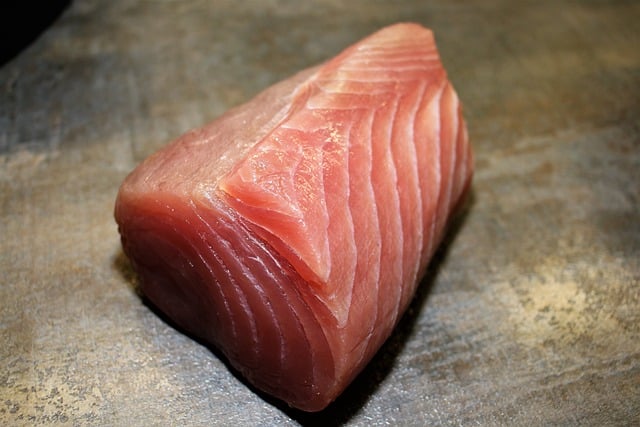
Tuna is a saltwater fish.
Tuna is a term that came into our language after an extensive etymological journey. It comes from the Hispanic Arabic attún , which derives from the classical Arabic tunn . This word, in turn, comes from the Latin thunnus , whose origin is found in the Greek thýnnos .
Tuna is a genus of teleost fish : that is, they have a completely ossified skeleton. The common tuna , also called bluefin tuna , is the species whose scientific name is Thunnus thynnus .
Tuna characteristics
Beyond the differences between species , tunas share traits. These are saltwater fish that are part of the group of acanthopterygians since their odd-numbered fins, or all of them, have spiny rays without articulation.
Generally, tuna is about three meters long. These animals are silver or gray underneath, while the upper part of their body is bluish or black.
Tuna are migratory species . They can travel up to 50 kilometers per day, in some cases swimming at a depth of 400 meters.
Some varieties
We said that Thunnus thynnus is known as common tuna , bluefin tuna or bluefin tuna . Specimens of this species can weigh more than 600 kilograms and, having the ability to increase their body temperature , they can live in very cold waters.
In subtropical and tropical seas we can find albacore tuna , light tuna or yellowfin tuna ( Thunnus albacares ). Blackfin tuna ( Thunnus atlanticus ), eastern bluefin tuna or bighorn tuna ( Thunnus orientalis ), and southern bluefin tuna ( Thunnus maccoyii ) are other varieties of this genus.

Tuna can be consumed fresh or canned.
Tuna in human nutrition
Every year millions of tons of tuna are caught worldwide. The meat of this fish is highly appreciated, whether fresh or preserved.
In the case of fresh tuna, it can be prepared in different ways. Sorropotún or marmitako , for example , is a stew made with albacore tuna, tomato, pepper, onion and potatoes. Ceviche or ceviche , meanwhile, can be made with tuna marinated in a citrus dressing, while for sushi you can also use this fish. Another popular option in several regions is to grill fresh tuna.
With the ventrasca (the meat located near the belly, in the lower area of the fish), onion tuna is usually made. The belly is also used in the so-called sand tuna , which is generally grilled .
In any case, the most common thing is that tuna is consumed canned . In this case, the fish meat is cut into pieces or shredded, subjected to a cooking process and canned with salt as a preservative. It can be natural tuna (in water) or in oil .
Its inclusion in the diet
Thanks to the content of iron , omega-3 fatty acids and proteins , including tuna in the diet provides health benefits. It may contribute to cardiovascular function and tissue repair.
However, it must be taken into account that canned tuna usually includes a high amount of salt , which can be harmful to people who have hypertension. Additionally, purines can affect those who suffer from gout or hyperuricemia.
